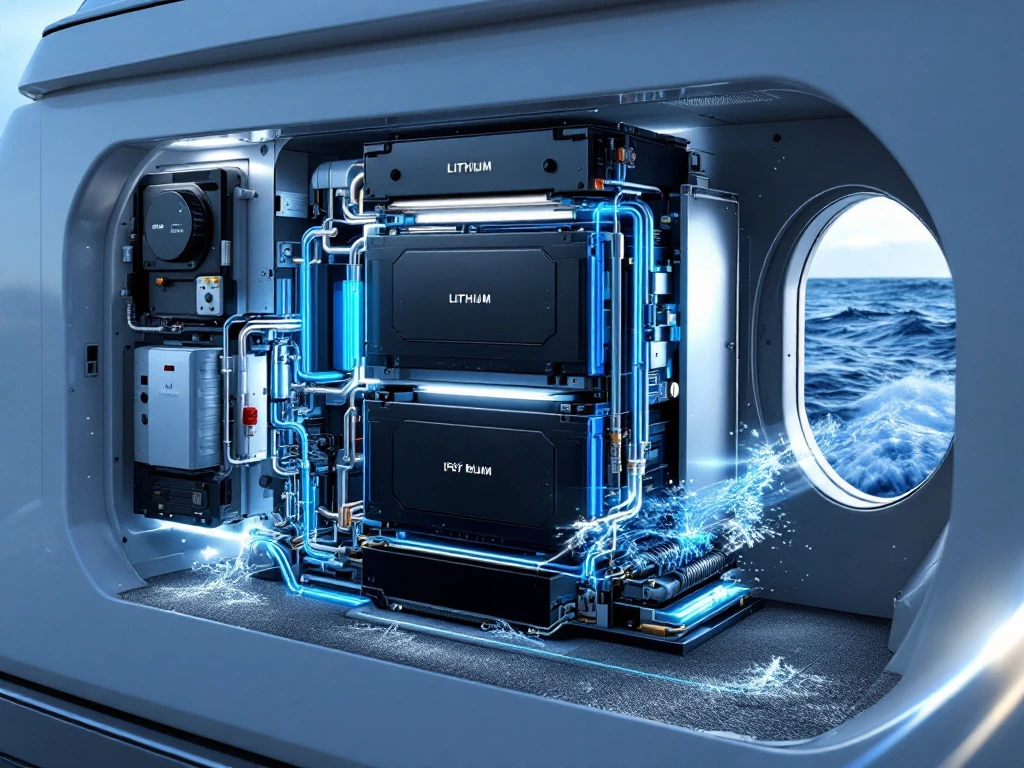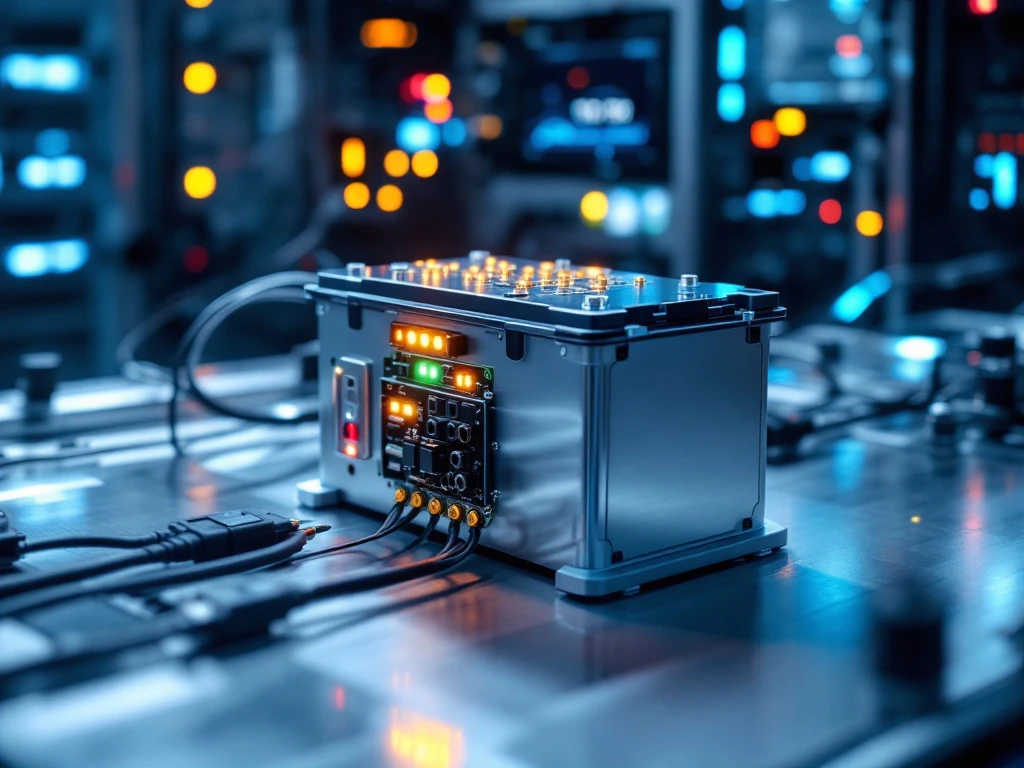Battery safety standards for marine applications encompass specialised regulations and protocols designed to protect watercraft electrical systems from the unique challenges of maritime environments. These standards include international certifications like IEC 62619, UL 1973, and DNV GL regulations, which address saltwater corrosion, humidity exposure, vibration resistance, and thermal management requirements specific to marine energy storage systems.
Understanding marine battery safety requirements
Marine battery safety requirements represent a critical foundation for any watercraft electrical system, addressing the unique hazards present in maritime environments. Unlike terrestrial applications, boat battery safety must account for constant moisture exposure, saltwater corrosion, and the dynamic forces experienced at sea.
Watercraft batteries face challenges that simply don’t exist in land-based applications. The combination of saltwater spray, humidity levels often exceeding 90%, and continuous vibration creates an environment where standard battery systems would quickly fail or pose serious safety risks.
Maritime battery systems require specialised safety protocols because failure at sea can have catastrophic consequences. When you’re miles from shore, a battery fire or electrical failure isn’t just an inconvenience, it’s a life-threatening emergency. This reality drives the development of stringent marine battery regulations that prioritise both performance and safety.
What are the main safety standards for marine batteries?
The primary safety standards for maritime battery systems include IEC 62619 for lithium-ion batteries, UL 1973 for stationary energy storage, and DNV GL maritime regulations, each addressing specific aspects of marine energy storage safety and performance requirements.
IEC 62619 establishes safety requirements for lithium-ion batteries used in industrial applications, including marine environments. This standard covers thermal stability, electrical safety, and mechanical integrity under various stress conditions typical of maritime use.
UL 1973 focuses on stationary energy storage systems but applies to marine installations where batteries remain fixed within the vessel. This certification addresses fire safety, electrical protection, and environmental resistance requirements.
| Standard | Focus Area | Key Requirements |
|---|---|---|
| IEC 62619 | Lithium-ion safety | Thermal stability, electrical protection |
| UL 1973 | Energy storage systems | Fire safety, environmental resistance |
| DNV GL | Maritime applications | Marine-specific hazards, certification |
| IMO Guidelines | International shipping | Transport safety, handling procedures |
DNV GL provides maritime-specific certifications that address the unique challenges of marine environments, including enhanced vibration resistance and saltwater exposure protection. These regulations work alongside international maritime standards that establish comprehensive requirements for global shipping operations and cross-border compliance.
How do marine environments affect battery safety requirements?
Marine environments significantly elevate battery safety requirements due to saltwater corrosion, extreme humidity, temperature fluctuations, and constant vibration, necessitating enhanced protection systems and specialised materials not required in terrestrial applications.
Saltwater exposure creates corrosive conditions that can rapidly degrade battery components and electrical connections. This corrosion risk requires marine battery systems to incorporate corrosion-resistant materials and protective coatings throughout their construction.
Temperature fluctuations in marine environments can be extreme, with batteries potentially experiencing freezing conditions at night and high temperatures during sunny days. These thermal cycles stress battery chemistry and require robust thermal management systems.
Humidity levels at sea regularly exceed those found on land, creating condensation risks that can lead to electrical shorts or component degradation. Marine battery regulations therefore mandate superior moisture protection and ventilation systems.
Constant vibration from wave action and engine operation subjects batteries to mechanical stresses that can loosen connections, damage internal components, or cause structural failures. This reality drives requirements for enhanced mounting systems and vibration-resistant designs.
What safety features must marine batteries include?
Marine batteries must incorporate battery management systems, thermal protection, waterproof enclosures, emergency shutdown mechanisms, and specialised ventilation systems to meet maritime safety standards and protect against the unique hazards of marine environments.
Battery management systems serve as the brain of marine energy storage, continuously monitoring cell voltages, temperatures, and current flows. These systems automatically disconnect power if dangerous conditions develop, preventing thermal runaway or electrical fires.
Thermal protection includes both passive and active cooling systems designed to maintain safe operating temperatures even under extreme marine conditions. This protection often involves liquid cooling systems that can handle the demanding thermal cycles experienced at sea.
Waterproof enclosures with appropriate IP ratings protect internal components from saltwater intrusion whilst allowing necessary ventilation. These enclosures must balance protection with the need for heat dissipation and gas venting.
Emergency shutdown mechanisms provide manual and automatic methods to disconnect battery power in emergency situations. These systems must remain accessible and functional even when other electrical systems fail.
How are marine battery systems tested for safety compliance?
Marine battery systems undergo rigorous testing including vibration testing, salt spray resistance evaluation, thermal cycling, electrical safety verification, and environmental stress testing to ensure compliance with maritime safety standards before certification approval.
Vibration testing simulates the constant motion experienced at sea, subjecting batteries to various frequencies and amplitudes that replicate real-world marine conditions. This testing ensures connections remain secure and internal components don’t shift or fail.
Salt spray resistance testing exposes battery systems to accelerated corrosion conditions, verifying that protective coatings and seals maintain their integrity over extended periods of saltwater exposure.
Thermal cycling tests subject batteries to repeated temperature changes, ensuring the system can handle the expansion and contraction cycles common in marine environments without compromising safety or performance.
Electrical safety verification includes insulation resistance testing, ground fault protection verification, and arc fault detection system validation to ensure the battery system won’t create electrical hazards aboard the vessel.
What are the installation requirements for safe marine battery systems?
Safe marine battery installation requires proper compartment ventilation, secure mounting systems, marine-grade electrical connections, accessible maintenance points, and integration with vessel safety systems to ensure compliance with maritime regulations and operational safety.
Compartment ventilation must provide adequate airflow to remove any gases generated during battery operation whilst preventing the ingress of saltwater or excessive moisture. This ventilation system often includes both passive and active components.
Mounting systems must secure batteries against the dynamic forces experienced at sea, including sudden impacts from large waves or emergency manoeuvres. These systems typically involve multiple mounting points and shock-absorbing materials.
Electrical connections require marine-grade components rated for the harsh maritime environment, including corrosion-resistant terminals, waterproof junction boxes, and properly sized conductors that can handle both normal operations and fault conditions.
Integration with vessel safety systems ensures the battery system communicates with fire suppression systems, emergency power management, and navigation equipment to maintain vessel safety under all conditions.
Key takeaways for marine battery safety compliance
Marine battery safety compliance centres on understanding that maritime environments demand significantly higher safety standards than terrestrial applications, requiring specialised certifications, enhanced protection systems, and rigorous testing protocols to ensure safe operation at sea.
The most critical compliance factors include obtaining appropriate certifications such as IEC 62619 and DNV GL approval, implementing comprehensive battery management systems, and ensuring proper installation with adequate ventilation and secure mounting.
Best practices for maintaining compliance involve regular inspection of protective systems, verification of ventilation effectiveness, and ongoing monitoring of battery performance parameters to identify potential issues before they become safety hazards.
Successful marine battery implementation requires collaboration between battery manufacturers, vessel designers, and certification bodies to ensure all safety requirements are met whilst achieving the performance demands of maritime applications.
For racing applications and high-performance marine systems, these safety standards become even more critical due to the extreme operating conditions and performance demands. If you’re developing a marine battery system that requires custom engineering solutions to meet these stringent safety requirements, we encourage you to contact our team to discuss your specific application needs and compliance requirements.



